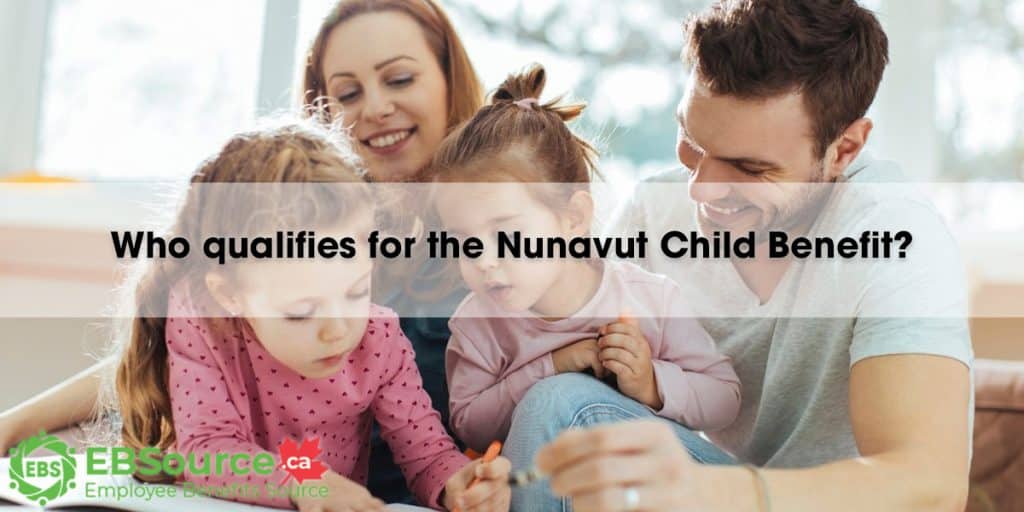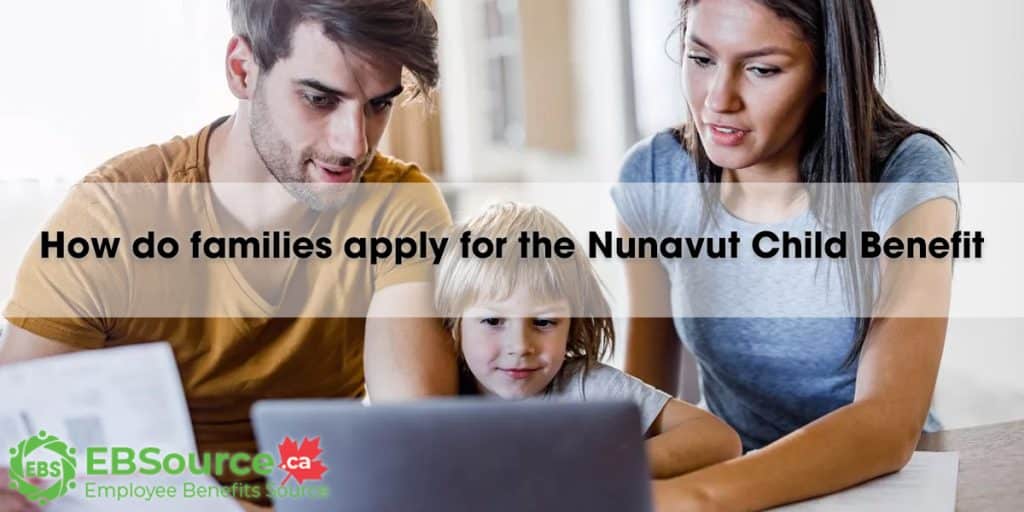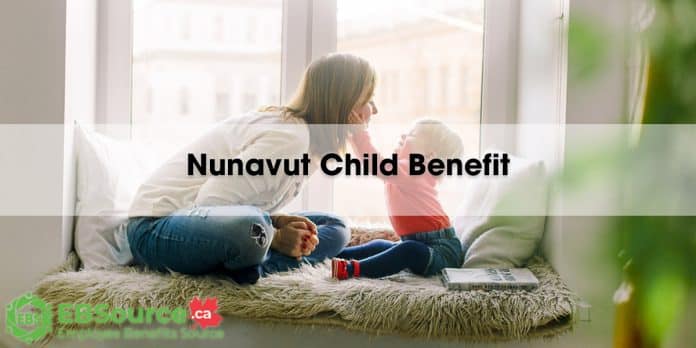Families living in Nunavut have special difficulties, such as much higher prices for basic things like food and shelter than in other parts of the country. Because of this, many people find it harder to raise children.
To help ease some of this pressure, the Nunavut Child Benefit (NUCB) provides monthly payments to eligible families, making life a bit more affordable for children growing up in Nunavut. This is an important financial program that helps families with low income in Nunavut, a northern part of Canada.
What is the Nunavut Child Benefit?
The Nunavut Child Benefit (NUCB) is a program that the Government of Nunavut gives extra money to help low-income families in Nunavut with the cost of raising children.
The program is administered and distributed by the Canada Revenue Agency (CRA), and payments are combined with the federal Canada Child Benefit to simplify the process by delivering a single monthly payment to recipients.
More than just a financial handout, the NUCB acknowledges the unique economic pressures that northern families face. With food and housing costs often several times higher than in the south, this benefit plays a vital role in helping families cover essential needs for their children.
Who qualifies for the Nunavut Child Benefit?

The five main things you need to meet to be eligible for the Nunavut Child Benefit are:
- The primary caregiver must be a resident of Nunavut.
- The children must be under 18 years of age and live with the caregiver.
- The family must be registered for the federal Canada Child Benefit.
- Current tax filing status with the Canada Revenue Agency
- Adjusted family net income (AFNI) below program thresholds
If your family meets these rules, you don’t need to apply for the Nunavut Child Benefit. It is automatically included with your monthly Canada Child Benefit (CCB) payment. All you need to do is file your taxes every year and keep meeting the requirements.
How much money can families receive from NUCB?
Each child under 18 in a family that qualifies gets about $29 every month. This means eligible families receive a base payment of $348 per year for each child. In addition to this, the NUCB program includes the Territorial Workers’ Supplement (TWS) to provide an extra boost to working families.
This supplement is for working families who have an earned income of more than $3,955 in the previous tax year. It provides additional monthly support on top of the basic NUCB payment. The TWS amounts are:
- Up to $24.16 per month for the first child.
- Up to $30.75 per month for families with two or more children.
Here is how the combined benefits can add up for a working family:
| Family Size | Basic NUCB (Annual) | TWS (Annual) | Total Potential Annual Benefit |
| 1 child | $348 | $290 | $638 |
| 2 children | $696 | $369 | $1,065 |
| 3 children | $1,044 | $369 | $1,413 |
These combined payments are delivered monthly via direct deposit or cheque.
Even if your family’s net income is over $22,065, you could still receive a partial payment. The benefit doesn’t just stop; it’s gradually reduced as your income goes up. This ensures that you are always better off financially when you earn more and don’t suddenly lose support for a small raise.
Source: Nunavut Child Benefit (NUCB) – Government of Nunavut
How do families apply for the Nunavut Child Benefit?

You don’t need to fill out a separate application for the Nunavut Child Benefit (NUCB). Your eligibility is reviewed automatically when you file your taxes.
To make sure you get the NUCB, follow these four steps:
- Register for the CCB through the CRA after your child’s birth.
- File your taxes on time every year, typically by the April 30 deadline, so the CRA can assess your eligibility.
- Report any changes to your marital status or number of children to the CRA as soon as they happen.
- Keep your address up to date to avoid payment delays.
Important note: If you’ve recently moved to Nunavut, update your address with the CRA right away. Payments usually begin within 6 to 8 weeks after your taxes are filed or your address is updated.
When do NUCB payments arrive each month?
You can expect your NUCB payment to be deposited on the 20th of each month, combined with your federal CCB payment. If the 20th ever falls on a weekend or holiday, the money will arrive on the business day before. This reliable schedule helps families budget for monthly expenses like groceries and bills.
It’s important to know that the benefit year runs from July to June. Your payment amount for that period is calculated from the tax return you file in the spring. If you miss the tax deadline, your payments will be paused until your return is processed.
If you apply late, don’t worry, as you can get back pay. For instance, if you become eligible in October but don’t get approved until January, you’ll receive a lump sum for the months you missed.
It’s important to know that you can request back payments for up to the last 10 years if you were eligible but didn’t receive them. However, if you are applying for a period that started more than 11 months ago, you will likely need to provide extra supporting documents. (Source)
What happens to the Nunavut Child Benefit if family income changes
Your benefit payments are based on last year’s Adjusted Family Net Income (AFNI), so they won’t change right away if your pay goes up or down this year. The amount is set from July to June and stays the same until it’s recalculated the following summer.
You must inform the CRA as soon as possible if, for example, your marital status changes, your custody arrangement changes, or the person primarily responsible for the child changes, as these events can affect your payments. The CRA will recalculate your benefits if your life situation changes in specific ways.
However, if your income drops significantly because of something like a job loss, you should not assume the CRA will recalculate your benefits early. In this case, you need to contact the CRA directly to confirm your options and understand how your income change might affect future benefits. You may also need to provide them with proof, like a record of employment, to show your new situation.
If you end up getting paid too much (an overpayment), the CRA will usually just lower your future payments to get the extra money back. If it’s a large amount, you can talk to them about setting up a payment plan to make it more manageable.
Can separated parents both receive NUCB payments?
If you share custody, the benefit payment is also shared. The way it works is that the CRA considers it shared custody when a child lives with each parent at least 40% of the time. In these cases, the CRA calculates the benefit for each parent based on their individual income. Then, each parent receives 50% of the benefit amount they would have been entitled to if they had full custody.
It’s important to know that the CRA doesn’t split the benefit in other ways, like 70/30; it’s always a 50/50 split of each parent’s calculated entitlement in qualifying shared custody situations.
In case of a disagreement, official proof is what matters most. You’ll need documents like school records showing the child’s main address, which are more important than a verbal agreement. Benefit eligibility is based on who has care and upbringing of the child, not on who claims the child for other tax purposes.
Thus, the best way to avoid problems is to have a written custody agreement. If both parents claim the child without one, the CRA will likely pause the payments until you can provide clear proof of the living arrangement.
If you want to find out about child benefits in other provinces, take a look at the list below:
- Prince Edward Island Child Benefit
- Newfoundland and Labrador Child Benefit
- New Brunswick Child Tax Benefit
- Manitoba Child Benefit
The bottom line
The Nunavut Child Benefit helps families in the territory deal with the high costs of raising kids in a tough environment. It gives out regular, tax-free monthly payments that work with other federal benefits, making it easier for the people who need the help the most to get financial support without a lot of trouble.
To fully benefit from this support, families need to ensure their tax details are current and quickly notify authorities of any changes in their situation. Understanding the program’s requirements and staying on top of paperwork helps families unlock the full value of this vital support designed specifically for Nunavut’s unique realities.
FAQs about Nunavut Child Benefit
Is the Nunavut Child Benefit taxable income?
No, it's fully non-taxable. This means you do not have to report it as income on your tax return, and it will not increase the amount of tax you owe.
Can I get the Nunavut Child Benefit if I work?
Yes, if net income is under $22,065, earned income over $3,955 may get an extra supplement.
Why was my Nunavut Child Benefit reduced or stopped?
This usually happens due to income above the limit, not filing taxes, a child turning 18, or not updating family info.
Where do I update my information for the Nunavut Child Benefit?
Update your information through the Canada Revenue Agency by calling 1-800-387-1193, using CRA My Account online, or submitting forms by mail.
Can both parents receive the Nunavut Child Benefit for the same child?
Yes, in a shared custody arrangement, the payment is split. Each parent receives 50% of the benefit they would have qualified for based on their own individual income.
What happens to the Nunavut Child Benefit when my child turns 18?
Payments will automatically stop. The last payment you receive for that child will be for the month they turn 18.
Do I qualify for NUCB if I receive social assistance?
Yes, families receiving social assistance can qualify for NUCB if they meet income requirements and have children under 18.
When does the Nunavut Child Benefit payment year start?
The payment year runs from July to June. To ensure your payments continue without interruption, you must file your income tax return on time each year, typically by April 30th.

